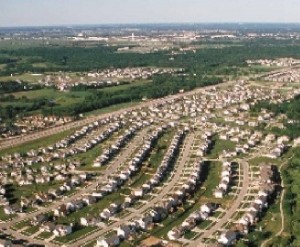
Is "walkable urbanism" the next big residential construction trend? According to Christopher Leinberger, it could be impacting suburban centers soon.
By Peter Ricci
It was just a couple weeks ago that we looked at the multifamily housing boom and how dense urban environments were not going anywhere, and now, an academic has struck upon a catchy term to better describe the trend – “walkable urbanism.”
Coined by Christopher Leinberger, a real estate developer, Brookings Institute researcher and George Washington University professor, Leinberger argues that walkable urbanism represents the real estate market of the future, as the newest generation of professionals move from sprawling, loosely-connected suburban areas to tightly-packed cities
Walkable Urbanism – Future of Real Estate?
Leinberger originally studied the walkable urbanism trend in a report for the Brookings Institute, and he’s expanding upon it in a special presentation tomorrow for the Urban Land Institute. Leinberger’s findings are:
- “Regionally significant walkable urban places,” which are walkable places in cities that act as job centers, are highly influential for metropolitan areas.
- Those places, Leinberger said, represent the future of cities and the greater real estate market, as residential construction, office space, entertainment and retail will all congregate around these walkable places.
- The premium prices those areas command, he adds, are evidence of the high demand for walkable spaces. And, as we reported on multifamily housing, new studies show that the total area of single-family homes is expected to shrink by nearly four billion square feet by 2021, which will be the first increase in urbanization for the U.S. since World War II.
Walkable Urbanism…in the Suburbs?
As Atlantic Cities pointed out in a recent story on Leinberger and his walkable urbanism ideas, Leinberger is not necessarily arguing that suburban families should move into the city, or that cities should dramatically increase their size and scope; rather, the homebuilding trend of the future is “urbanization of the suburbs,” he says.
The challenge going forward, he says, will be for builders and real estate developers to catch on to this trend, and begin urbanizing suburban areas and consolidating the town’s retail, business and residential needs.
Calls for a new era of urbanization – after decades of flourishing suburbia – are nothing new, but the “walkable urbanism” idea does present a new twist on the concept. What are your thoughts? Are you seeing such trends in your areas?
